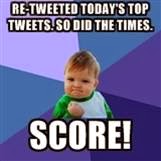Social network analysis examines information exchange
between individuals or groups. It examines patterns between people and the
resources that are exchanged through information control. These exchanges of information are
represented through Sociograms, where the actors, or an individual, group,
organization, or institution are symbolized as nodes and the information flow
is symbolized by lines connecting the nodes.
For our case study we have elected to study the use of media
phenomena of the 2011 London Riot. Between Saturday the 6th and Thursday 11
August 2011, thousands of people rioted in several London boroughs and in
cities and towns across England. The resulting chaos generated looting, arson,
and mass deployment of police. Social media outlets such as Twitter and Black
Berry Messenger were used by rioters to organize events like where to meet up
for the riots. Also the authorities used SNA to help them make connections
between rioters to track down those responsible.






.jpg)

